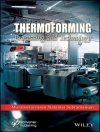This book focuses on the research development of lignin conversion to aromatic compounds. It provides systematic results for the study of lignin conversion by giving details of lignin depolymerization and mechanisms.
Inhaltsverzeichnis
Part I Book Introduction1
1. Background and Overview
Part II Lignin Introduction
2. Lignin Biosynthesis, and Lignin Structure
3. Lignin Isolation, Physicochemistry Properties, and Chemical Properties
Part III Lignin Depolymerization: Scientific Questions, Challenges, and Current Progress
4. Scientific Questions for Lignin Conversion and Brief Summary of Methods for Lignin Depolymerization
Part IVReview on Lignin Linkages Cleavage Strategies and Mechanisms via an IDA Method
5. The Inverse Disassembly Analysis Method for Classifying Lignin Conversion Strategies
6. Direct Lignin C-OAr, Ar O-Ar or C-Ar Bonds Cleavage without First Activation of the Adjacent Chemical Bonds
7. Lignin C-C/C-O Bonds Cleavage via First Phenolic Hydroxyl Group Dehydrogenation or First Aromatic Rings Activation
8. Lignin Linkages Cleavage Beginning with C alpha O-H/Ar O-H or C alpha-OH Bond Heterolysis
9. Lignin Linkages Cleavage Beginning with Calpha-H, C alpha-OH, or C alpha O-H Bond Non-ionized Activation
10. Lignin Linkages Cleavage Beginning with C beta-H, C gamma-H, or C gamma O-H Direct Activation
11. Lignin Linkages Cleavage Considering Fragments Condensation
Part V Outcome and Outlook
12. Summary on Lignin Utilization and Perspectives on Aromatic Chemicals Preparation
Über den Autor
Dr. Chaofeng Zhang received his Ph.D. degree in Physical Chemistry from Dalian Institute of Chemical Physics (DICP), Chinese Academy of Sciences, under the supervision of Professor Feng Wang in 2017. Then he joined in the DICP as an assistant professor. His research interests include catalytic transformation of biomass resource to valuable chemicals and fuels; synthesis of nanostructured heterogeneous catalysts; organic synthesis with photoelectrocatalytic methods.
Professor Feng Wang received his Ph.D. degree in Physical Chemistry from Dalian Institute of Chemical Physics (DICP), Chinese Academy of Sciences, in 2005, and he joined DICP and was promoted to full professor in 2011. He did postdoctoral research on heterogeneous catalysis at University of California at Berkeley and Catalysis Research Center of Hokkaido University. Currently, he is the director of the Biomass and Bio-energy Division of the Dalian National Laboratory for Clean Energy (DNL). His research interests include: Heterogeneous C-O band transformation catalysis; synthesis of nanostructured metal and metal oxide catalyst; in situ characterization technique for liquid phase reaction; catalytic biomass conversion to valuable chemicals.












